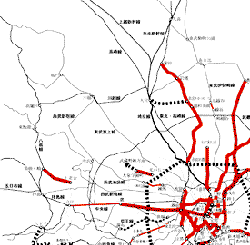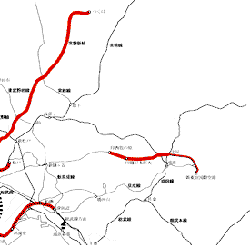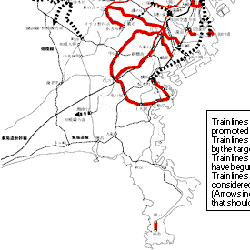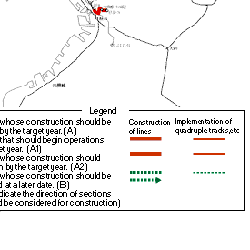| Easing the congestion for commuters during the rush hours in the three major metropolitan areas has been a pressing problem for many years. A steady decline in the rate of congestion has been achieved due to vigorous efforts to improve transport routes. However, extreme crowding persists on some routes, and as such, it is necessary to continue making required improvements and to complete the network to lessen the rate of congestion. In addition, it is necessary to make transfers between various modes of transportation smoother and user-friendlier. By doing so, the transport needs of people commuting to work and school, as well as city residents in general, can be satisfied. |
Targets and Current State of Commuting Congestion. |
|
| The rate of congestion on railways in major American cities such as New York and in major European cities such as London and Paris is between 100% and 110%. On the other hand, the rate of congestion on railways in the Tokyo area is nearly 200%. |
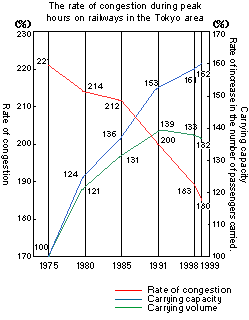 |
|
||||||||||||||||
Plans for Construction of Railroads in the Tokyo Area. |
|||||
| The railroad network in the Tokyo area. | |||||
|
|||||
| Note: 1. This map outlines a rail network based mainly on the routes planned for construction. 2. "Construction of lines" include the using of cargo-traffic lines for passenger traffic and "implementing quadruple tracks, etc" includes improvement work. Source: Council for Transport Policy, "The Construction of a Transportation Network Centered on Rapid-Transit Railway in the Greater Tokyo Area"(Report No. 18) |
|
|
PREVIOUS |
|
TOP |
|





